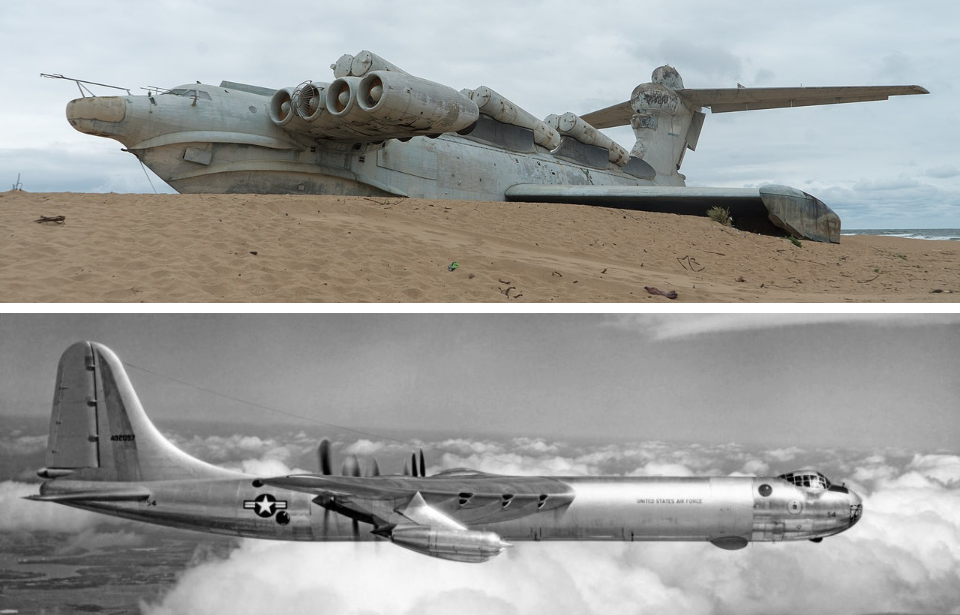As with every list about extreme machinery, equipment designed for the military typically ranks high in comparison to its civilian counterparts, which often have far less demanding requirements. In the following list, we look at some of the largest ever military aircraft to roll off production lines, ranging from the 1940s, all the way to the monsters of today.
Convair B-36 Peacemaker
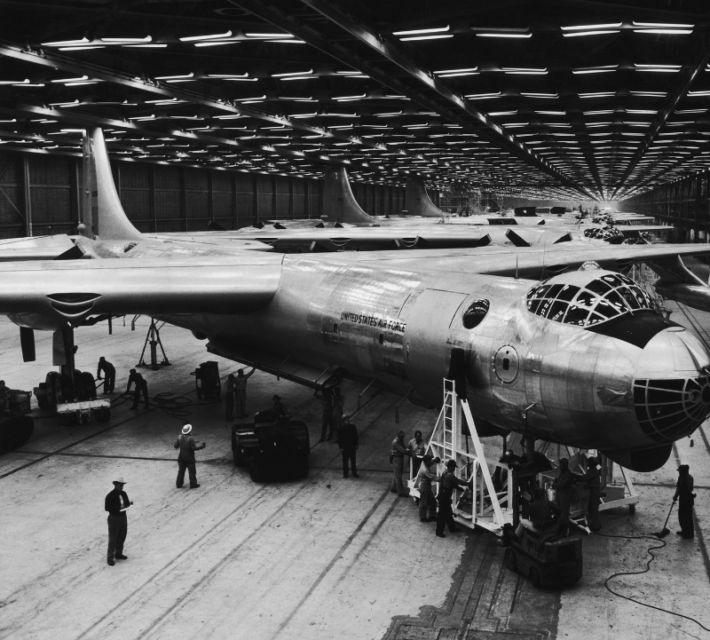
The Consolidated B-36 Peacemaker was a huge aircraft with an equally large list of records under its belt – it still holds the titles for being the largest mass-produced piston engine aircraft in history; having the longest wingspan of any combat aircraft, at 230 feet; being the first truly intercontinental bomber; and being the first bomber with the capacity to carry nuclear weapons out of the gate, without any modifications.
Keeping this 200-ton beast in the air were six Pratt & Whitney 28-cylinder radial engines that each produced 3,800 horsepower, along with a further four General Electric turbojet engines. Despite its impressive specifications, the B-36 had a rather lackluster career, bridging the gap between piston engines of old and high-speed jet bombers. It served with the US Air Force between 1949-59.
MD-160 (‘Caspian Sea Monster’)
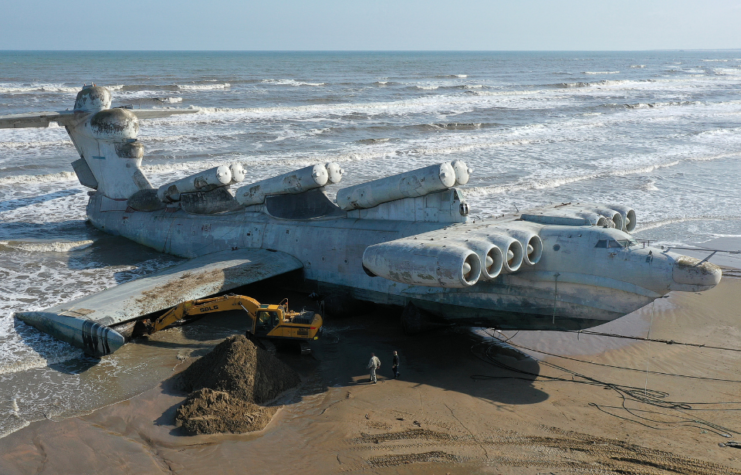
The MD-160, better known as the Caspian Sea Monster, held the title of the largest and heaviest aircraft between 1966-88. The experimental Soviet aircraft-ship hybrid used ground effect to carry equipment and cargo. It weighed 1.2 million pounds, could reach one-to-five meters above sea level and was capable of traveling up to 342 MPH.
The ekranoplan essentially combined the cargo capability of a ship with the speed of an aircraft. Its surprise discovery on US spy images dumbfounded American Intelligence. By the time officials discovered its true purpose, it had already been retired, sitting unused until 2020.
Antonov AN-225 Mriya
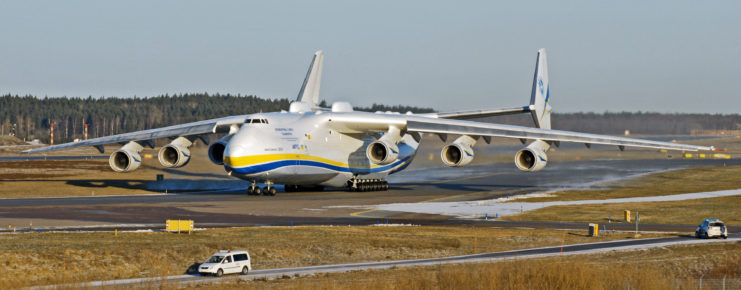
No list about incredibly large aircraft is complete without the Antonov An-225 Mriya. This absolute marvel of Soviet engineering is the largest and heaviest aircraft ever built, with a maximum takeoff weight of 700 tons and the capacity to carry approximately 250 tons of cargo – its cargo hold is so large that the first flight of the Wright brothers could have been performed entirely inside it.
The An-225 was developed as part of the Space Race and featured an impressive six Progress D-18T turbofan engines, which allowed it to transport the Buran space shuttle on its back. Two were ordered, but only a single unit was delivered. The Soviet Union’s collapse put an end to the Buran space program, meaning work on the second An-225 was halted.
The sole An-225 was placed in storage, where it remained for many years. However, the aircraft was destroyed during the Battle of Antonov Airport in February 2022, following the Russian invasion of Ukraine.
Blohm & Voss BV 238
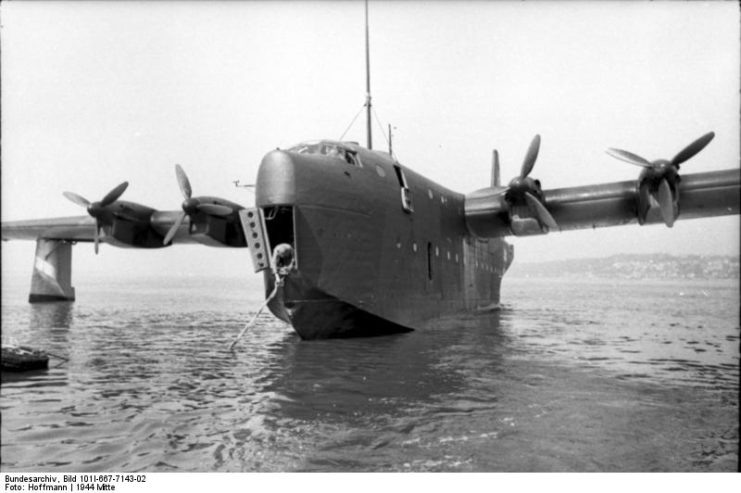
The Blohm & Voss’ BV 238 was Germany’s attempt at building a giant flying boat. It was the largest the country made during the Second World War and was the heaviest aircraft in the world at the time it was built.
This 43.35-meter-long aircraft had a gross weight of between 198,416 and 209,000 pounds, depending on the mission type, and it was powered by six Daimler-Benz DB603G inverted V-12 liquid-cooled piston engines. One prototype was built, but it was strafed and sunk while moored at Lake Schaal, Germany.
North American XB-70 Valkyrie
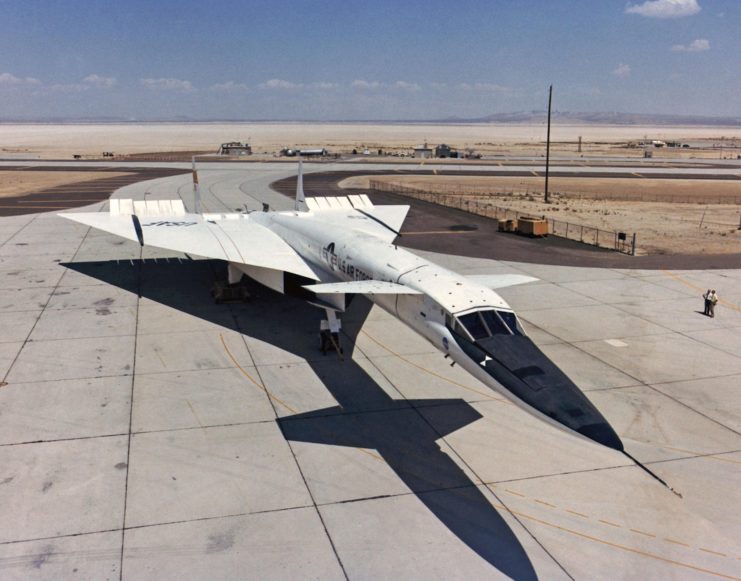
The XB-70 is probably the most incredible aircraft that never was. North American Aviation developed it during the 1950s and first flew it in ’64. Its was a prototype for the planned B-70 nuclear bomber, capable of flying at 2,056 MPH at over 77,000 feet – too fast and high for any interceptor.
At the time, these capabilities made the XB-70 virtually immune to interception, but the introduction of surface-to-air missiles significantly reduced its invulnerability. On top of this, intercontinental ballistic missiles coming into use essentially ended the project outright.
Two prototypes were built, which were subsequently used to test high-speed flight. It was in this role that one of the prototypes was destroyed when it collided with a Lockheed F-104N Starfighter in 1966. The other was flown to the National Museum of the United States Air Force, where it remains today.
Hughes H-4 Hercules (‘Spruce Goose’)
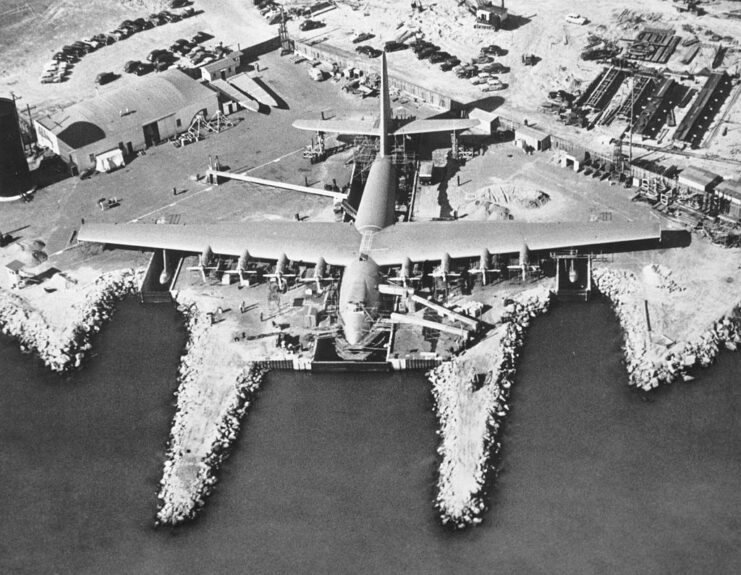
This huge flying boat was one of American billionaire Howard Hughes’ creations. The H-4 Hercules was made mostly from wood, earning it the moniker, “Spruce Goose.” It was designed as a cargo aircraft that could fly over the Atlantic during the Second World War, but its delayed development meant it wasn’t finished until 1947. The largest aircraft ever built at the time, it featured an over 320-foot wingspan and, overall, was 219 feet long.
Hughes had used government funding to develop the H-4 and was called to testify in front of a committee in 1947. To prove the funds weren’t wasted, he made a single one-mile-long flight, at a height of about 70 feet. After touching back down, he kept the aircraft in a climate-controlled hangar, where it was maintained by a secret team for the next 30 years.
More from us: The Soviet MiG-17 ‘Fresco’ Gave the North Vietnamese An Edge Against American Aircraft
It only ever flew once.
